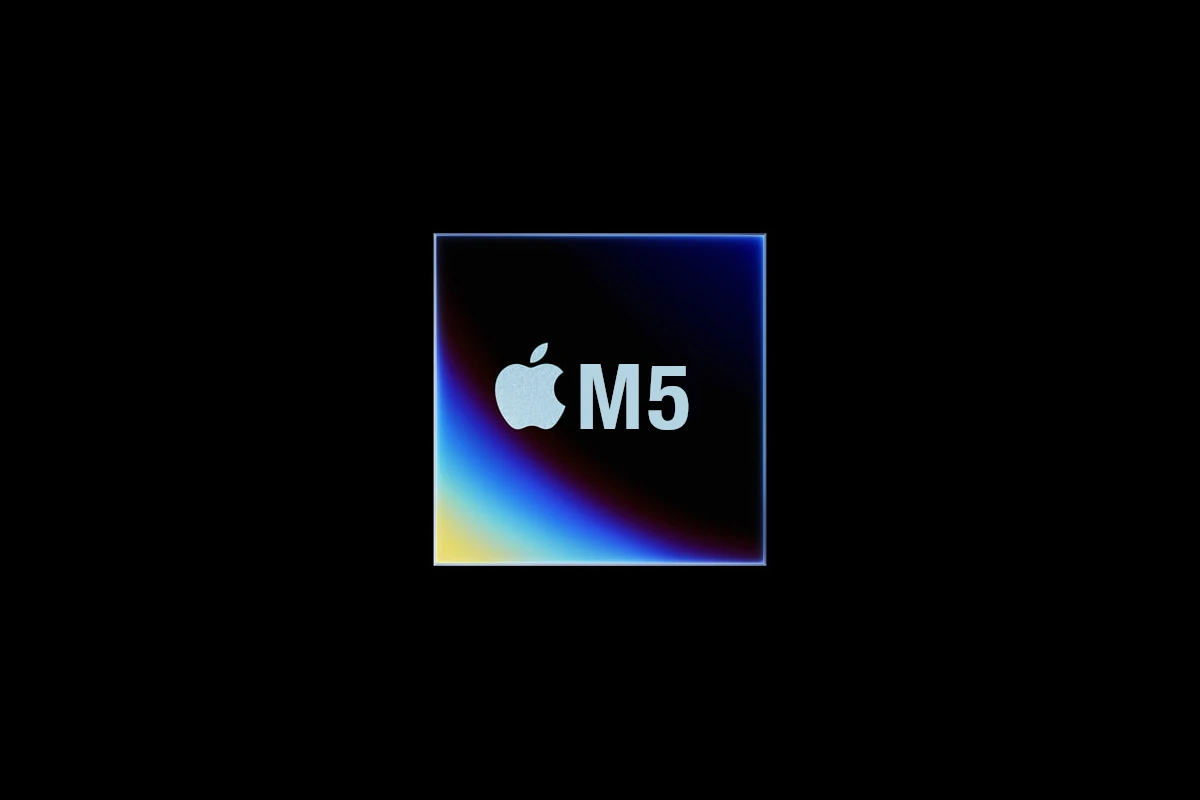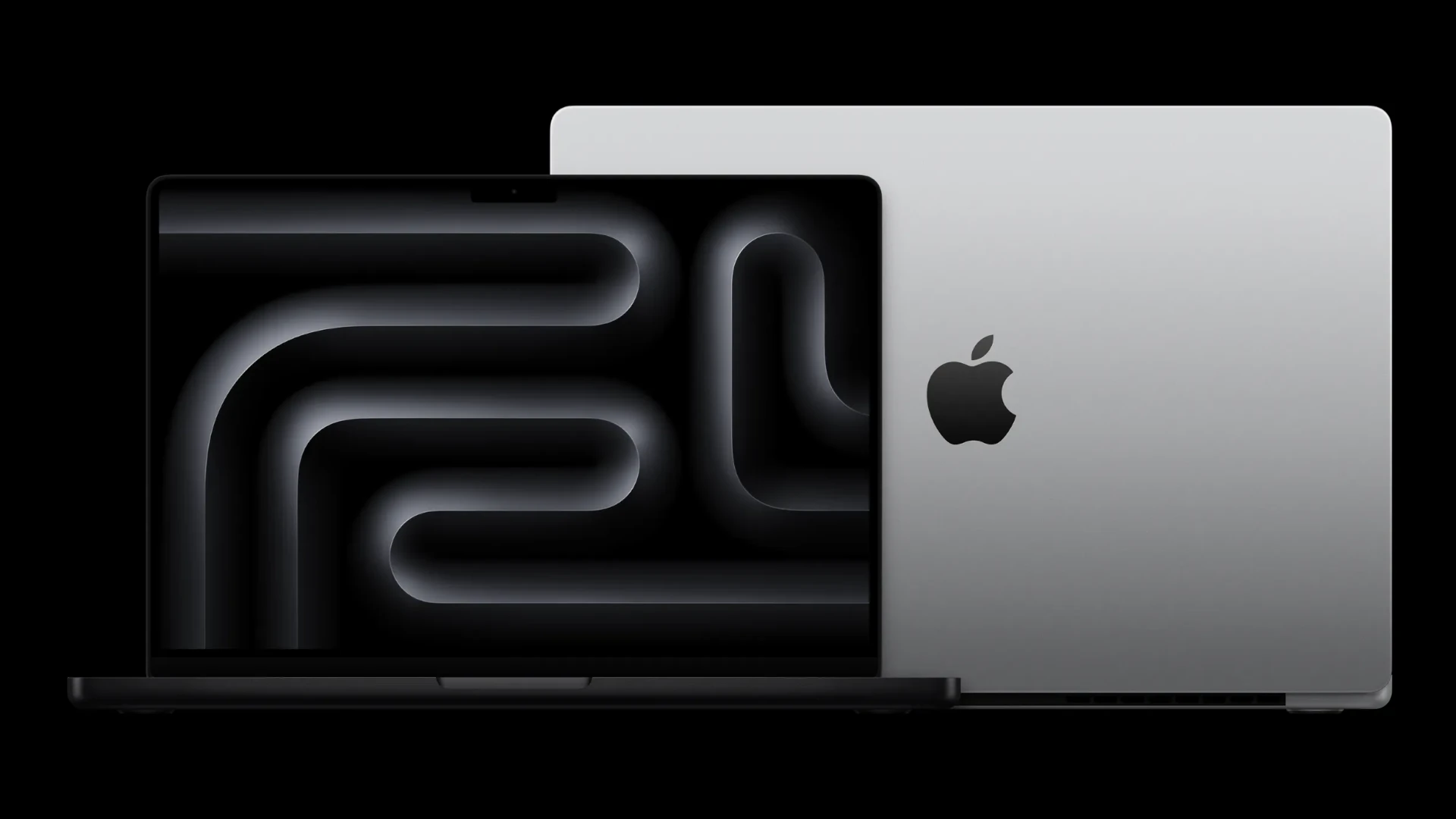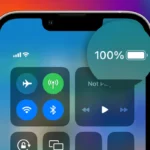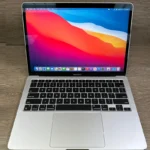Apple is gearing up for another leap in laptop performance with its highly anticipated MacBook Pro refresh slated for late 2025. Following the successful release of the M4-powered MacBook Air in March, all eyes are now on the more powerful Pro line, which is expected to usher in the debut of the new M5 chip. Here’s a closer look at everything we know so far, and why the 2025 MacBook Pro may be worth the wait for power users and professionals alike.
Expected Release Date: Fall 2025
Apple typically launches MacBook Pro updates in the fall, and current reports suggest the M5 models will follow suit, likely arriving in October or November 2025. This refresh will maintain the existing 14-inch and 16-inch form factors, with major changes happening under the hood.

M5 Chip: Built for Performance and AI
The M5 chip will mark the next evolution in Apple Silicon. It’s reportedly being built on an advanced version of TSMC’s 3nm process, possibly N3E, offering improved power efficiency and performance over the M4 and M3 generations.
Key expectations for the M5 chip family:
- 15–25% performance improvement over M4 in both CPU and GPU tasks
- Enhanced AI capabilities, tapping into on-device machine learning and future Apple Intelligence features
- Support for advanced packaging like SoIC (System on Integrated Chip), improving thermal management and memory bandwidth
- Multiple variants including:
- M5 (base)
- M5 Pro
- M5 Max
- M5 Ultra (expected for the Mac Studio or Mac Pro in 2026)
MacBook Pro 2025 Models
The upcoming MacBook Pro models are likely to retain the same physical design as their M3 predecessors, introduced in late 2023. While not a radical overhaul, the internal enhancements will be meaningful for professionals who demand speed, stability, and longevity from their machines.
Expected specs and features:
- 14-inch MacBook Pro: Base model likely powered by the standard M5 chip
- 14-inch & 16-inch high-end models: Configurable with M5 Pro and M5 Max chips
- Support for Wi-Fi 7: Faster wireless connectivity and lower latency
- Expanded Thunderbolt 5 support: Enabling higher data throughput and display bandwidth
Comparing The Different Apple Chips
Here’s a detailed comparison chart highlighting the key differences and expected upgrades between the M3, M4, and upcoming M5 Apple Silicon chips:
| Feature | Apple M3 | Apple M4 (2024) | Apple M5 (Expected Late 2025) |
|---|---|---|---|
| Release Date | October 2023 | March 2024 (iPad Pro), March 2025 (MacBook Air) | October–November 2025 (MacBook Pro expected) |
| Manufacturing Node | TSMC 3nm (N3B) | TSMC 3nm (Likely N3E) | TSMC 3nm (Enhanced N3E or new N3P process) |
| CPU Cores | Up to 8-core CPU (4 performance, 4 efficiency) | 10-core CPU (6 performance, 4 efficiency) | Likely 10+ cores, higher performance tuning |
| GPU Cores | Up to 10-core GPU | Up to 10-core GPU | Base: ~12-core GPU, Pro/Max: up to 40+ cores |
| Neural Engine (AI) | 16-core | 16-core (faster than M3) | Enhanced 16+ core Neural Engine w/ AI boost |
| Unified Memory Support | Up to 24GB (base M3) | Up to 32GB (MacBook Air M4) | Up to 48GB (base M5), 64–128GB (Max/Ultra) |
| External Display Support | 1 (MacBook Air), 2 (MacBook Pro) | Up to 2 external + 1 internal | Up to 3 external (base), more on Pro/Max |
| Wi-Fi | Wi-Fi 6E | Wi-Fi 6E | Wi-Fi 7 (expected) |
| Thunderbolt | Thunderbolt 4 | Thunderbolt 4 | Thunderbolt 5 (expected on Pro models) |
| Key Performance Gains | ~20% over M2 | ~20–25% over M3 in CPU/GPU tasks | ~15–25% over M4, better thermal and AI ops |
| Thermal Design Focus | Optimized for efficiency | Improved sustained performance | Better thermals, chiplet/stacked design (Pro/Max) |
| Use Cases | MacBook Air, iMac | iPad Pro (first), MacBook Air | MacBook Pro (base, Pro, Max) |
| Notable First Devices | MacBook Pro (Oct 2023), iMac (Nov 2023) | iPad Pro (May 2024), MacBook Air (March 2025) | MacBook Pro 14/16-inch (Oct–Nov 2025) |
Looking Ahead: A Bigger Redesign in 2026?
If you’re hoping for a visual refresh or new display tech, you may want to wait until 2026. According to several reports, Apple is working on a more ambitious update that includes:
- OLED displays with higher contrast and better battery efficiency
- M6 chip, which could introduce a more modular system architecture
- Potential new form factors or even touch-enabled MacBooks as Apple evolves its vision of the laptop
Bottom Line: Who Should Wait, and Who Should Buy?
If you’re in the market for a powerful MacBook Pro and want the latest chip tech with better thermal performance, faster speeds, and enhanced AI tools, the M5 refresh coming later in 2025 will be the sweet spot.
But if you’re looking for a major redesign, improved display technology, or a more future-proof machine for the next 4–5 years, it might be worth holding off until the OLED-equipped MacBook Pros in 2026.
Either way, Apple’s roadmap shows a clear path toward even more powerful, AI-capable Macs, and the M5 update is a key step in that journey.
- M3: Great for everyday users and students — efficient and fast.
- M4: Best for portable power and media-heavy tasks — especially in the new iPad Pro and MacBook Air.
- M5: Ideal for professionals — AI-intensive work, multitasking, and future-proofing.
When Is the Best Time to Buy a New MacBook?
Thinking about a new MacBook but not sure when to buy it? Timing can make a big difference in what you get and how much you pay. Let’s look at the best times to make your purchase so you can get the most value.
The best time to buy a MacBook is typically during July for back-to-school deals with free AirPods, or during November’s Black Friday sales when discounts are often at their peak. Waiting for these sales periods can save you money whether you’re looking at a MacBook Pro or Air model. The October Prime Big Deal Days also offer good chances to find markdowns.
Another smart move is to check Apple’s timing for new releases. Buying right after a new model comes out means getting the latest tech, while shopping just before a new release might score you big discounts on the outgoing models. Many Mac fans watch Apple’s spring and fall events closely to plan their purchases.
Understanding MacBook Models
Apple offers different MacBook models with various specifications to meet different user needs. Knowing the differences between models helps buyers make informed choices about which MacBook best suits their requirements and budget.
MacBook Air vs MacBook Pro
The MacBook Air is Apple’s thinnest and lightest laptop. It’s perfect for everyday tasks, web browsing, and office work. The Air starts at a lower price point than the Pro models.
The MacBook Pro is designed for professionals and power users. It offers:
- Better cooling systems
- More powerful processors
- Higher-end display options (including mini-LED on some models)
- Longer battery life
MacBook Pro models come in 14-inch and 16-inch sizes, while the Air comes in 13-inch and 15-inch versions. Pro models include more ports like HDMI and SD card readers.
Weight is another key difference. The Air weighs about 2.7-3.3 pounds depending on size, while Pro models range from 3.5-4.7 pounds.
Advancements in MacBook Technology
Apple’s switch to custom silicon has revolutionized MacBooks. The M3 MacBook models offer significant performance improvements over Intel-based predecessors.
The newer M4 MacBook Air provides even better:
- Battery efficiency (up to 18 hours)
- Graphics processing
- AI capabilities through Neural Engine
Display technology has also improved with:
- Liquid Retina XDR displays on Pro models
- ProMotion technology (120Hz refresh rate)
- True Tone color adjustment
Apple has enhanced security with the T2 security chip and Touch ID fingerprint sensors across all models. The keyboard design has returned to a more reliable scissor mechanism after issues with the butterfly keyboards.
Storage and RAM Options
MacBooks offer various storage and memory configurations that significantly impact performance and price.
SSD Storage Options:
- 256GB: Entry-level, good for basic use
- 512GB: Recommended minimum for most users
- 1TB: Ideal for media creators and professionals
- Higher options up to 8TB (Pro models only)
RAM (Unified Memory):
- 8GB RAM: Sufficient for basic tasks and light multitasking
- 16GB RAM: Recommended for most users, especially those using multiple applications
- 24GB/32GB+: For professional video editing, 3D rendering, and development
Apple’s unified memory architecture means RAM is integrated with the processor. This design improves performance but makes future upgrades impossible.
Storage speed varies between models, with Pro versions typically offering faster read/write speeds. Consider your long-term needs, as neither storage nor RAM can be upgraded after purchase.
Identifying the Right Time to Purchase
Buying a MacBook requires careful timing to get the best value. Knowing when Apple releases new models, when sales happen, and how to find quality refurbished options can save you hundreds of dollars.
Apple’s Product Release Cycle
Apple follows fairly predictable patterns for updating its Mac lineup. Most MacBook updates happen in the spring (March-May) or fall (September-November). Waiting for a new model introduction often gives you better technology for the same price.
The MacBook Air typically sees updates every 12-18 months, while the MacBook Pro may get refreshed annually for minor updates or every two years for major redesigns.
Checking MacRumors Buyer’s Guide helps track where each model stands in its update cycle. The color-coded system shows whether a purchase is recommended now or if waiting makes more sense.
Buying just after a new release ensures the longest useful life from your MacBook. However, waiting endlessly for “better tech” can become counterproductive if you need a computer now.
Seasonal Sales and Discounts
Several key shopping periods offer significant MacBook savings throughout the year. Black Friday and Cyber Monday typically feature discounts of $100-300 on MacBooks at retailers like Best Buy, Amazon, and B&H Photo.
The back-to-school season (July-September) brings education discounts directly from Apple, often including free AirPods or gift cards with purchase. Students, teachers, and education staff can save up to $200 on MacBooks year-round through Apple’s education store.
Prime Day (usually in July) has become another major sales event, with Amazon and competing retailers offering MacBook deals. January also sees post-holiday sales with good discounts.
For maximum savings, look beyond the Apple Store. Authorized retailers often offer better discounts on current models than Apple itself, especially during these seasonal promotions.
Refurbished Mac Opportunity
Refurbished MacBooks present an excellent value option, typically priced 15-20% below retail for nearly identical quality. Apple’s official refurbished store offers products that undergo rigorous testing and include the same one-year warranty as new models.
Key benefits of Apple-certified refurbished Macs:
- Full inspection and cleaning
- Replacement of any defective parts
- New outer shell and battery
- Original macOS installed
- Standard warranty with eligibility for AppleCare+
Third-party retailers like Best Buy and Amazon also sell refurbished Macs, often at even lower prices. However, quality control may vary compared to Apple’s program.
Refurbished options make the most sense when your current MacBook stops meeting your needs but you don’t want to pay full price. They’re particularly good deals for previous-generation models with specs that still exceed your requirements.
Purchase Channels and Pricing
Finding the right place to buy your MacBook can save you hundreds of dollars. Smart shoppers check multiple retailers and use special discounts to get the best deal.
Comparing Retailers and Online Marketplaces
The Apple Store offers the most consistent pricing but rarely has major sales. They do offer free engraving and the confidence of buying directly from the manufacturer.
Amazon frequently discounts MacBooks by $100-200 below Apple’s prices, especially during Prime Day and Black Friday. Best Buy, Walmart, and B&H Photo also run competitive sales throughout the year.
Authorized Apple resellers like Adorama and MacMall sometimes beat Apple’s prices by 5-10%. They often include free accessories or software with purchase.
Price comparison websites to check:
- PriceGrabber
- Slickdeals
- MacRumors Buyer’s Guide
Refurbished MacBooks from Apple’s Certified Refurbished program come with the same warranty as new models but cost 15-20% less. These are excellent options for budget-conscious buyers.
Leveraging Student and Educational Discounts
The Apple education discount offers substantial savings for students, teachers, and staff. Discounts typically range from $100-$200 depending on the model.
Students don’t need to verify their status for online purchases in many countries, but in-store purchases may require school ID. This discount works year-round, not just during back-to-school season.
Back-to-school promotions usually run from June through September and often include:
- Free AirPods with MacBook purchase
- Apple Store gift cards ($100-$150)
- AppleCare+ discounts
Educational institutions can access volume purchase programs for even deeper discounts. Faculty and staff should check with their IT departments about these options.
Some retailers like Best Buy offer their own student discounts that can sometimes beat Apple’s education pricing, especially during sales events.
Additional Considerations
Buying a MacBook involves more than just timing your purchase. These key factors can affect your long-term satisfaction with your device and help you make the most of your investment.
Future-Proofing Your MacBook
The M4 chip will likely be Apple’s next big processor upgrade. Getting a MacBook with extra RAM and storage now can extend its useful life.
Most experts recommend at least 16GB of RAM for future-proofing. Users can’t upgrade RAM after purchase, so it’s wise to buy what you’ll need long-term.
Storage needs grow over time. Starting with at least 512GB helps avoid external storage requirements later.
Consider the software you’ll use over the next 3-5 years. Professional apps like video editing software often need more powerful specs than basic productivity tools.
Apple typically supports MacBooks with software updates for 7+ years. A higher-spec machine today often means better performance in the later years of ownership.
Accessories and Connectivity
Thunderbolt 4 ports offer incredible versatility but may require adapters for older devices. Budget for dongles if you use older USB-A devices or need HDMI connections.
MacBooks support multiple external displays depending on the model. Check the specs for your specific model before purchasing if multi-monitor setups are important.
Essential accessories to consider:
- Protective case or sleeve
- USB-C hub or dock
- External hard drive for backups
- Screen protector
- Keyboard cover
Wireless accessories like mice, keyboards, and headphones work well with MacBooks. The newer Bluetooth standards offer better connectivity and battery life.
Consider AppleCare+ for extended warranty protection. The cost may seem high, but screen and logic board repairs without coverage can exceed $600.
Resale Value and Upgradability
MacBooks hold their value better than most laptops. Pro models typically retain higher resale values than Air models.
Modern MacBooks offer almost no user-upgradable parts. What you buy is what you’ll have for the life of the device.
Storage can be expanded externally, but internal storage cannot be upgraded. This limitation makes initial configuration choices more important.
Keeping your MacBook in good physical condition greatly impacts resale value. Using protective cases and cleaning regularly helps maintain appearance.
Apple offers a trade-in program that can offset the cost of a new MacBook. Third-party platforms like eBay often yield higher returns but require more effort.
Proper documentation and original packaging can increase resale value by 10-15%. Keep boxes and receipts in a safe place if you plan to sell later.
Security and Privacy Factors
MacBooks include robust security measures like Touch ID and the T2 security chip. These features protect personal data and prevent unauthorized access.
Privacy settings can be customized to limit what information apps can access. Review these settings when setting up a new MacBook.
Apple’s approach to privacy includes:
- Minimizing data collection
- On-device processing when possible
- App tracking transparency
- Private browsing options
Cookie policies and consent preferences should be reviewed in Safari. Users can choose to block all cookies or only third-party cookies.
Content measurement and audience research tools are limited by Apple’s privacy features. This provides better protection against unwanted tracking.
MacBooks encrypt user data by default. FileVault provides additional security by encrypting the entire drive, making data inaccessible without proper credentials.
Warranty and Support
When you buy a new MacBook, it comes with one year of hardware repair coverage through Apple’s limited warranty. This basic coverage protects against manufacturing defects.
You also get up to 90 days of free technical support with your purchase. This helps with initial setup and any questions you might have when first using your device.
For extra protection, consider AppleCare+. This extended service plan must be purchased within 60 days of buying your MacBook. It adds valuable coverage for accidents and extends the warranty.
What AppleCare+ includes:
- Extended warranty coverage (2-3 years total)
- Coverage for accidental damage
- 24/7 priority access to Apple support
- In-store repair service at Apple Stores
Some buyers find unexpected warranty dates when purchasing from third-party retailers. One customer reported that their MacBook Pro showed a warranty expiration just three months after purchase. Always check the warranty status after buying.
The Apple Store offers the most reliable warranty terms. They can also help explain coverage options when you buy directly from them.
Remember to register your MacBook after purchase to activate the warranty properly. This makes any future claims much simpler to process.
Exploring Alternative Options
Before buying a new MacBook, it’s worth considering other Apple computers that might better suit your needs and budget. Different Mac models offer varying levels of performance, portability, and value depending on your specific requirements.
Comparing the MacBook to the iMac and Mac Mini
The iMac and Mac Mini provide desktop alternatives that might save you money or offer better performance than a MacBook. The iMac combines a beautiful display with powerful components in an all-in-one design, making it perfect for home or office setups.
The Mac Mini, Apple’s smallest and most affordable computer, offers surprising power in a tiny package. It’s significantly cheaper than MacBooks while providing similar performance when paired with your own monitor and peripherals.
Price Comparison:
| Model | Starting Price | Best For |
|---|---|---|
| Mac Mini | $599 | Budget-conscious users, existing peripherals |
| MacBook Air | $999 | Portability, everyday tasks |
| iMac | $1,299 | Home/office, creative work |
| MacBook Pro | $1,599 | Professional tasks, on-the-go power |
When considering space and setup needs, desktop options like iMac and Mac Mini excel for permanent workstations but lack the portability of MacBooks.
Evaluating the Needs for Power Users vs. Casual Users
Power users should look at the 14-inch or 16-inch MacBook Pro models with M2 Pro or M3 Pro/Max chips. These laptops handle demanding tasks like video editing, 3D rendering, and software development with ease.
For casual users who mainly browse the web, check email, and work with documents, the MacBook Air (13-inch or 15-inch) provides more than enough power. The 15-inch MacBook Air offers a larger screen without the premium price of Pro models.
User Type Recommendations:
- Students/Writers: MacBook Air (affordable, portable, good battery)
- Creative Professionals: MacBook Pro or iMac (powerful processors, better displays)
- Home Users: Mac Mini or iMac (value, permanent setup)
- Business Travelers: MacBook Air (lightweight, all-day battery)
Battery life is another key factor—MacBook Air models typically offer 15-18 hours, while Pro models range from 12-22 hours depending on workload and model.
Frequently Asked Questions
MacBook buyers often need answers about timing, discounts, and upgrade cycles before making a purchase. These questions can help you make smarter buying decisions.
What is the ideal period of the year to purchase a MacBook Pro?
The best time to buy a MacBook Pro is typically right after Apple releases new models. This happens most often in the fall (September-November) or during their Worldwide Developers Conference (WWDC) in June.
When new models come out, older versions often drop in price. You can also check Apple’s refurbished store for deals on recent models.
Some experts suggest that “the best time is always ‘later'” since waiting means either better tech or lower prices. The MacRumors Buyer’s Guide can help you track current product cycles to make better timing decisions.
Are there specific seasonal sales events when MacBooks are typically discounted?
Yes, several major shopping events feature MacBook discounts. Back-to-school season (July-September) brings education pricing and often includes free AirPods or gift cards.
Black Friday and Prime Day seasons offer significant MacBook savings. These shopping holidays typically happen in November and July respectively.
Other good times include Cyber Monday, end-of-quarter sales (March, June, September, December), and when Apple clears inventory before new model launches.
How long after a new release do MacBook prices usually drop?
Price drops on older MacBook models typically begin immediately after new versions are announced. The initial discount is usually modest—around 10%.
Deeper discounts of 15-20% appear about 3-6 months after release. This happens when retailers need to move inventory and Apple’s initial supply constraints ease.
The biggest price drops (up to 25-30%) happen when the next generation is about to launch, usually 9-12 months after release.
Does Apple offer special MacBook discounts for educational purposes?
Yes, Apple offers education pricing for students, teachers, and staff at all education levels. These discounts typically save $50-$200 on MacBooks, depending on the model.
The Apple Education Store requires verification of your student or faculty status. During back-to-school promotions (summer months), Apple often adds extras like free AirPods or gift cards.
Many colleges also have campus stores with Apple products at education prices, sometimes with additional school-specific discounts.
Can savings on MacBooks be expected during Black Friday sales?
Yes, Black Friday offers some of the best MacBook deals of the year. Discounts typically range from $100-$500 off, depending on the model and its age.
Apple rarely offers direct discounts but may provide gift cards with purchase. The best deals come from authorized retailers like Best Buy, Amazon, B&H Photo, and Costco.
For maximum savings, look for models that are slightly older or recently replaced by newer versions. These often see the deepest Black Friday discounts.
What indicators suggest it’s time to consider upgrading to a newer MacBook model?
Your MacBook likely needs upgrading when it can’t run the software you need. If you’re experiencing frequent freezes, crashes, or very slow performance, these are clear signals.
Battery issues are another indicator—if your battery holds less than 80% of its original capacity or lasts only 1-2 hours, it might be time for a new machine. When repair costs become unreasonable, replacement makes more sense.
Apple typically supports MacBooks with software updates for 7-8 years. If your device no longer receives the latest macOS updates, you should consider upgrading for security reasons.







